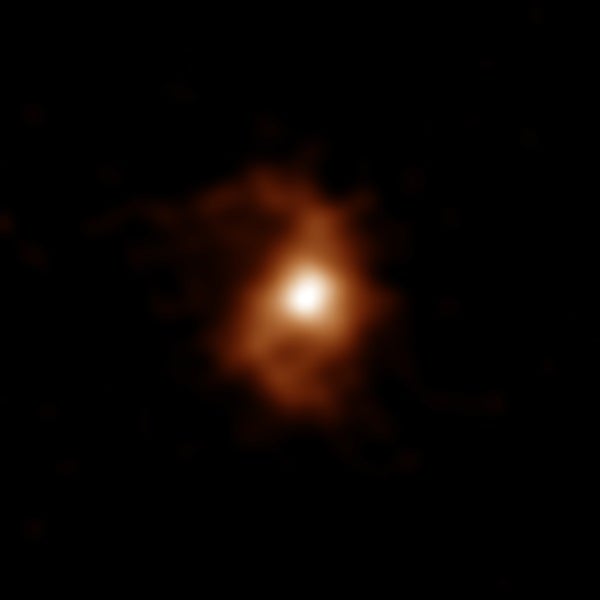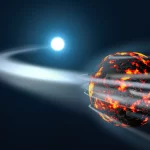Key Takeaways:
- ALMA telescope discovered a galaxy (BRI 1335-0417) with features of a spiral galaxy, dating back 1.4 billion years after the Big Bang, beating the previous record by over a billion years.
- BRI 1335-0417 is forming stars at a very high rate (5,000 Suns per year), making it a starburst galaxy.
- The galaxy has a rotating gas disk, central bulge, and possible spiral arms, which is surprising for such an early time in the universe.
- The 10,000 light-year long extensions could be true spiral arms or tidal tails (pulled out by another galaxy). More study is needed.
- The discovery challenges current understanding of how spiral galaxies form in the early universe.

This image may contain the earliest spiral galaxy that has been found, as evidenced by the curling, wispy arms. Viewed as it was only 1.4 billion years after the Big Bang, the graceful galaxy is seen. That outdates the previous record holder for a spiral galaxy by more than a billion years.
Using the Atacama Large Millimetre/submillimetre Array (ALMA) radio telescope in Chile, Takfumi Tsukui and Satoru Iguchi of Sokendai University in Tokyo made the discovery of this ancient specimen.
The galaxy, designated BRI 1335-0417, seems to exhibit spiral arms, a revolving gas disk, and a central bulge. A study of the galaxy’s spectra indicates that it is also producing new stars at a phenomenal rate, equivalent to 5,000 Suns every year. It is therefore referred to as a starburst galaxy.
All of the mentioned characteristics identify a young spiral galaxy approaching its prime. It is believed that waves of star formation spread throughout the disk of a young galaxy to produce spiral arms. However, at this early stage of the universe’s development, long before the cosmos as a whole attained its maximum rate of star formation, scientists had never before observed this kind of developed spiral structure.
The galaxy’s 10,000 light-year-long appendages could, however, not be spiral arms in the conventional sense. Alternatively, they might be tidal tails, which are streams of stars that were thrown outward after being knocked loose by a passing galaxy during a gravitational interaction. However, compared to the observed arms of BRI 1335-0417, tidal tails are usually larger and less tightly wound around a galaxy’s rotating disk, according to the authors of the new study.

